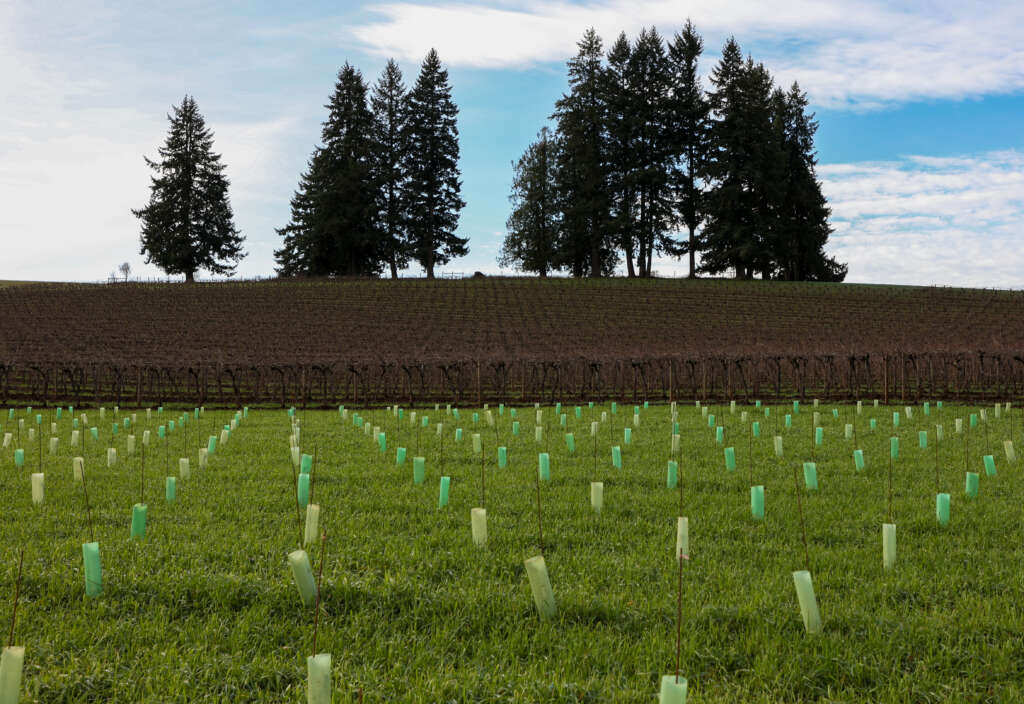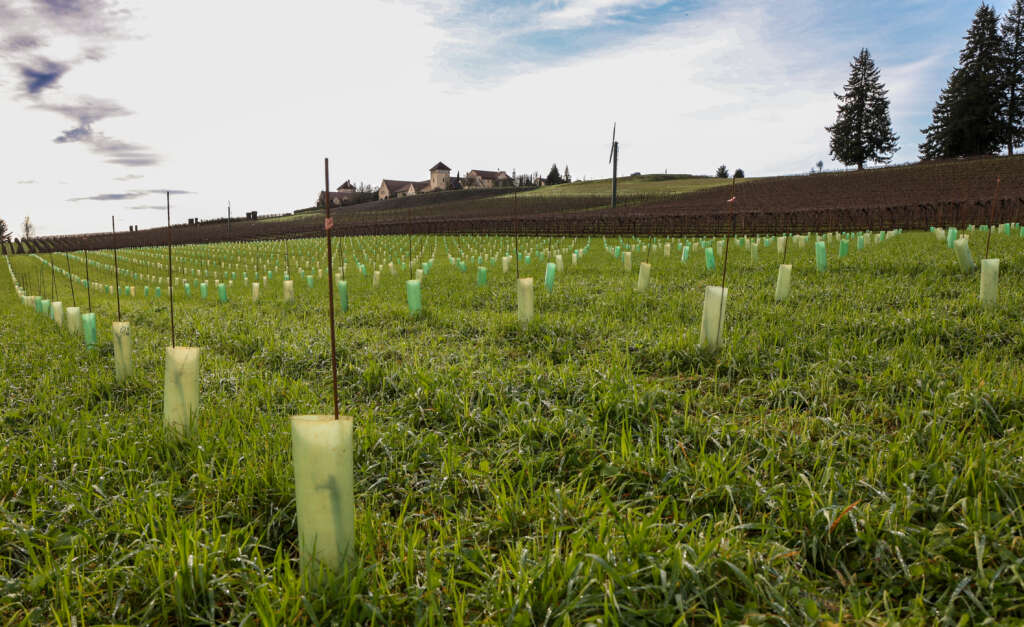The King Estate vineyard is an ever-changing landscape, carefully tended by our vineyard crew and viticulture team. A newly planted block of Pinot Gris provides a snapshot of how the vineyard evolves over time to make sure we have the fruit we need to make great King Estate wine.
Meet King Estate’s new Block 18H
The process of replanting Block 18B began in Spring 2020 when we removed 2.8 acres of underperforming Pinot Gris vines from this east-facing block located right in the heart of the vineyard. In November 2023, we planted 1,856 new vines on 1.7 acres of the block. That breaks down to 16 rows of grafted vines, 116 vines per row. The remaining 1.1 acres are expected to be planted in Spring 2024. The block was reclassified as Block 18H to keep it separate and distinct from the blocks around it. An initial, limited harvest of fruit from these vines is expected in 2027, with a full harvest of about 4 tons per acre by 2028.

Grafts grown in King Estate’s nursery
The grafts came from our own nursery. Grafting is a time-honored technique for producing grapevines that are disease resistant. Grafts in Block 18H are clone 146 grafted onto rootstock known affectionately as 101-14 Mgt (for Millardet et De Grasset – we know, now it all makes sense). 101-14 Mgt accounts for 30% of Oregon’s rootstock-planted acreage and is especially good for sites like ours that are later ripening with good precipitation and lower-acidity soils. This rootstock, Oregon’s second-most popular, thrives in our vineyard’s marine sedimentary Bellpine soils, a thin layer of silty clay loam that was formed when Oregon was under the sea more than 12 million years ago.
Clone 146 is an early-ripening grape that originated in Colmar in the Alsace region of France. Popular in Oregon, this clone is known for producing crisp, flinty Pinot Gris with signature light floral aromas and grapefruit characteristics.

Why the grow tubes?
The young vines are protected by grow tubes that help speed up the growth of vines during early spring by mimicking the effect of a greenhouse. The tubes protect the vines from equipment used in the vineyard and also make it easier to spot the vulnerable vines early in their growing seasons.
